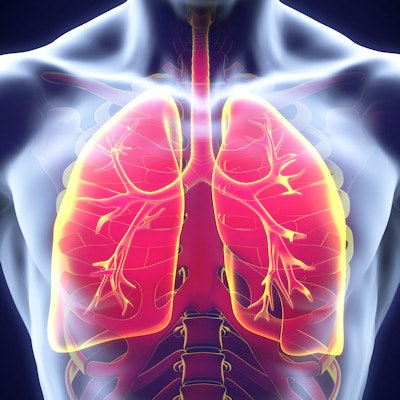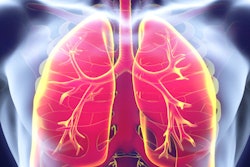
A new risk-prediction model proved capable of estimating the likelihood that pulmonary nodules detected on CT scans would become malignant in a new study, published online July 27 in Cancer Prevention Research. The model may assist clinicians in managing patients at risk of developing lung cancer.
Researchers from Stony Brook Cancer Center in New York used a common modeling technique to calculate the risk that a suspicious lung nodule found on a CT scan would progress into cancer based on a set of epidemiologic and imaging features.
 Barbara Nemesure, PhD, from Stony Brook Cancer Center in New York.
Barbara Nemesure, PhD, from Stony Brook Cancer Center in New York.Quantifying potential malignancy for pulmonary nodules early on could reduce the burden of care for low-risk individuals while ensuring that high-risk individuals receive appropriate treatment, first author Barabara Nemesure, PhD, and colleagues noted. "While lung nodules are not uncommon, a major challenge in the field is determining which nodules will progress to cancer," Nemesure said in a statement.
The group obtained data from 2,924 patients who had lung nodules detected on CT and were subsequently evaluated at the hospital's lung cancer evaluation center between January 2002 and December 2015. None of the patients had a history of lung cancer, though nearly 6% (171 patients) developed lung cancer by the end of the 13-year period.
Examining the data of roughly half of the cohort, Nemesure and colleagues identified several key clinical and radiological variables that had a statistically significant association (p < 0.001) with an increased risk of cancer, which they used to formulate their risk-prediction model:
- Patient age
- Patient smoking history
- Patient cancer history
- Presence of chronic obstructive pulmonary disease
- Nodule size
- Presence of nodule spiculation on CT
- Presence of ground-glass opacity on CT
Combining these factors allowed the researchers to determine the likelihood that a patient's lung nodule was cancerous and then stratify the patients based on their risk score. After applying the risk model to the other half of the cohort, they discovered that patients categorized as having a high-risk score were over 14 times more likely to have a lung nodule that developed into cancer than those with a low-risk score.
Furthermore, they found that the model was able to distinguish benign from cancerous lung nodules with an accuracy of 86%, a sensitivity of 73%, and a specificity of 81%. The risk model was also effective at differentiating the type of cancer a nodule would develop into; the model's accuracy was 84% for identifying early-stage cancers, 86% for late-stage cancers, and 87% for non-small cell cancers.
"Through our model, we can identify which individuals with lung nodules should be closely monitored so that we can catch the disease at an early stage and ultimately reduce the burden of lung cancer deaths," Nemesure said. "Even though the majority of lung nodules do not progress to cancer, it is still vitally important that patients seek follow-up care."




















